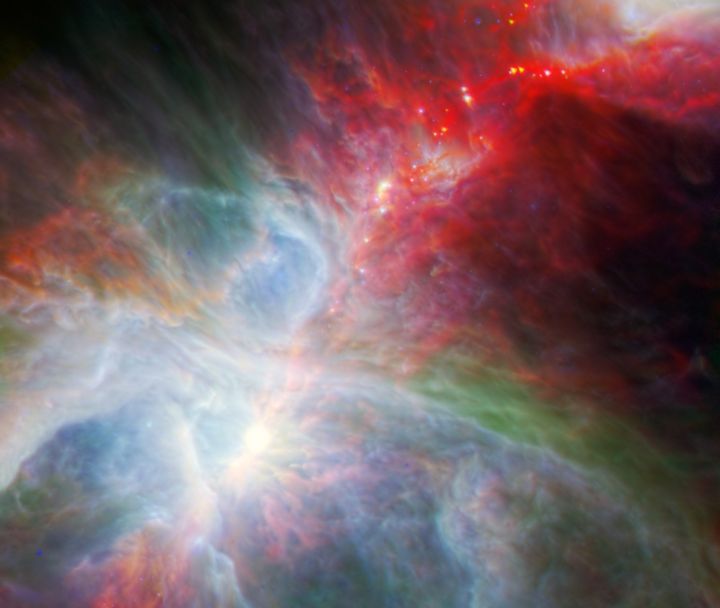NASA has released an incredible 4K video that allows you to ‘fly’ through the Orion Nebula, one of the brightest and most spectacular examples of a nebula we know of.
Nebula’s are a stunning example of the beauty of the universe.
These galactic ‘nurseries’ of gas and dust are where stats like our own sun are first created.
The 4K video uses state-of-the-art animation techniques to turn our 2D imagery of the Orion Nebula into a vast 3D model which can then be explored at will.
As the video zooms in you can make out both the visible light (what we can see with our own eyes) and the infrared view captured by NASA’s Spitzer space telescope.
The visible light (measured by Hubble) usually indicates gasses that are glowing through heat, in this case the thousands of degrees. Spitzer on the other hand is able to use its infrared camera to spot far cooler objects, usually measured in the hundreds of degrees.
“Being able to fly through the nebula’s tapestry in three dimensions gives people a much better sense of what the universe is really like,” explained the Space Telescope Science Institute’s visualization scientist Frank Summers, who led the team that developed the movie.
“By adding depth and structure to the amazing images, this fly-through helps elucidate the universe for the public, both educating and inspiring.”

The Orion Nebula is one of the brightest in the night sky and is actually visible to the naked eye. Easily identified as the middle ‘star’ in the sword of the constellation Orion, The Hunter.
What makes Orion so special however is the fact that despite being 1,350 light years away, it is only around 2 million years old and gives us a rare glimpse into the kind of nebula that could have created our own star some 4.5 billion years ago.
“The main thing is to give the viewer an experiential understanding, so that they have a way to interpret the images from telescopes,” explained Summers.
“It’s a really wonderful thing when they can build a mental model in their head to transform the two-dimensional image into a three-dimensional scene.”
